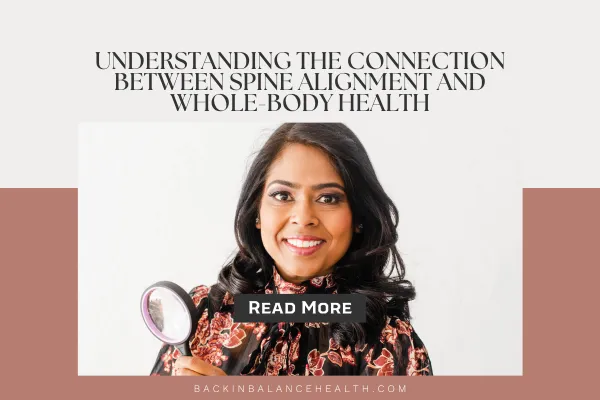
Understanding the Connection Between Spine Alignment and Whole-Body Health

Understanding the Connection Between Spine Alignment and Whole-Body Health
A Chiropractor’s Perspective on Structure and Function
Hello, dear readers! Today, we're diving into a topic that’s close to my heart as a chiropractor: the intricate relationship between the structure of our spine and the overall function of our body.
If you’ve ever wondered why a visit to your chiropractor includes questions about your daily habits, even those seemingly unrelated to your musculoskeletal health, let’s unravel that mystery together.
Why Your Chiropractor Asks About Your Daily Habits
When new patients come in for their initial appointment, they’re often surprised by some of the questions I ask. Alongside the usual queries about back or neck pain, I might inquire about how much water they drink, or how often they use the restroom. These questions can seem unrelated, but they’re actually crucial for understanding the bigger picture of your health.
You see, our body works as a unit. The spine, with its intricate network of nerves branching out to various organs and tissues, plays a pivotal role in this unity. Misalignment in your vertebrae—those small bones that stack up to form your spine—can affect not just your back and neck, but your entire body.
Understanding Spinal Misalignment
Most often, when a vertebra is out of alignment, it’s due to a rotational shift rather than a side-to-side or front-to-back movement. This rotation can cause the muscles on one side of the vertebra to become overly contracted, while the muscles on the other side become too loose or taut.
Regardless of how this imbalance feels—whether it’s tightness or a lack of sensation—it’s an indicator that something is off.
The nerves trailing behind these misaligned vertebrae connect to vital organs and tissues throughout your body, such as your heart, stomach, and kidneys. Simply put, when your spine’s structure is compromised, the function of your organs may also be affected.
Structure and Function: An Interwoven Relationship
The alignment of your spine can influence various bodily functions, from digestion to circulation. For instance, someone might come in with digestive issues, and we’ll explore not just their dietary habits, but also the alignment of their vertebrae.
By addressing both structure and function, we aim for a holistic approach to health.
This is one reason why I love combining chiropractic care with functional medicine. It allows me to address health issues at a foundational level, treating the body as an interconnected whole rather than a collection of isolated symptoms.
Take Charge of Your Health
Empower yourself by understanding how the structure of your spine can impact your overall well-being. Regular visits to a chiropractor can help maintain proper alignment, potentially alleviating a range of symptoms and improving your quality of life.
Your body is a complex, wonderful system, and taking a holistic approach to your health can make all the difference.
If you would like expert help, we’d love to work with you!
Or if you'd like to DIY, we have an amazing course!
Recommended Reading:
1. “The Younger Next Year Back Book: The Whole-Body Plan to Conquer Back Pain Forever” - Chris Crowley and Jeremy James DC CSCS
2. “Young Forever: The Secrets to Living Your Longest, Healthiest Life” – Dr. Mark Hyman.
Stay healthy and empowered,
Dr. Anjali Agrawal





